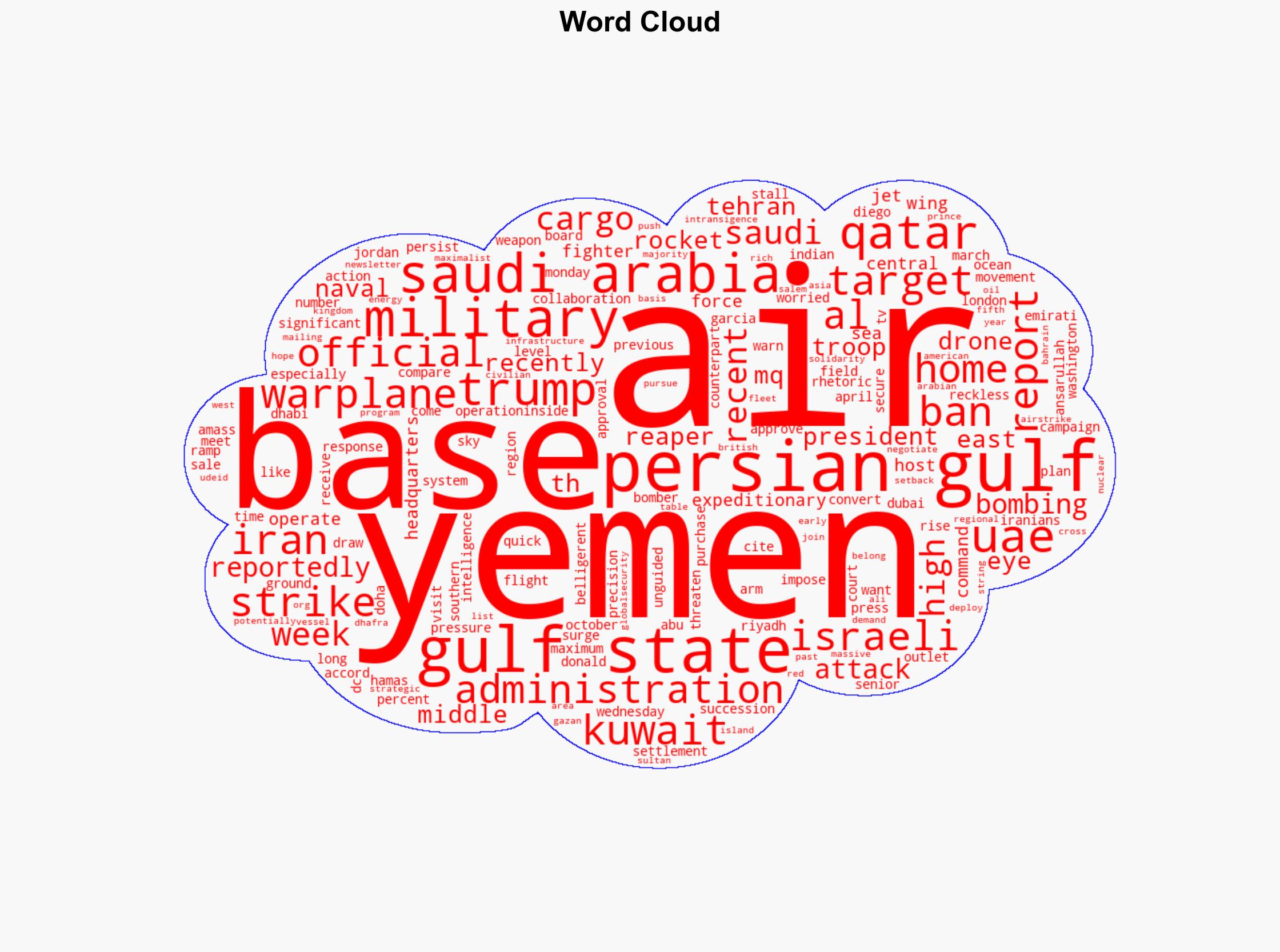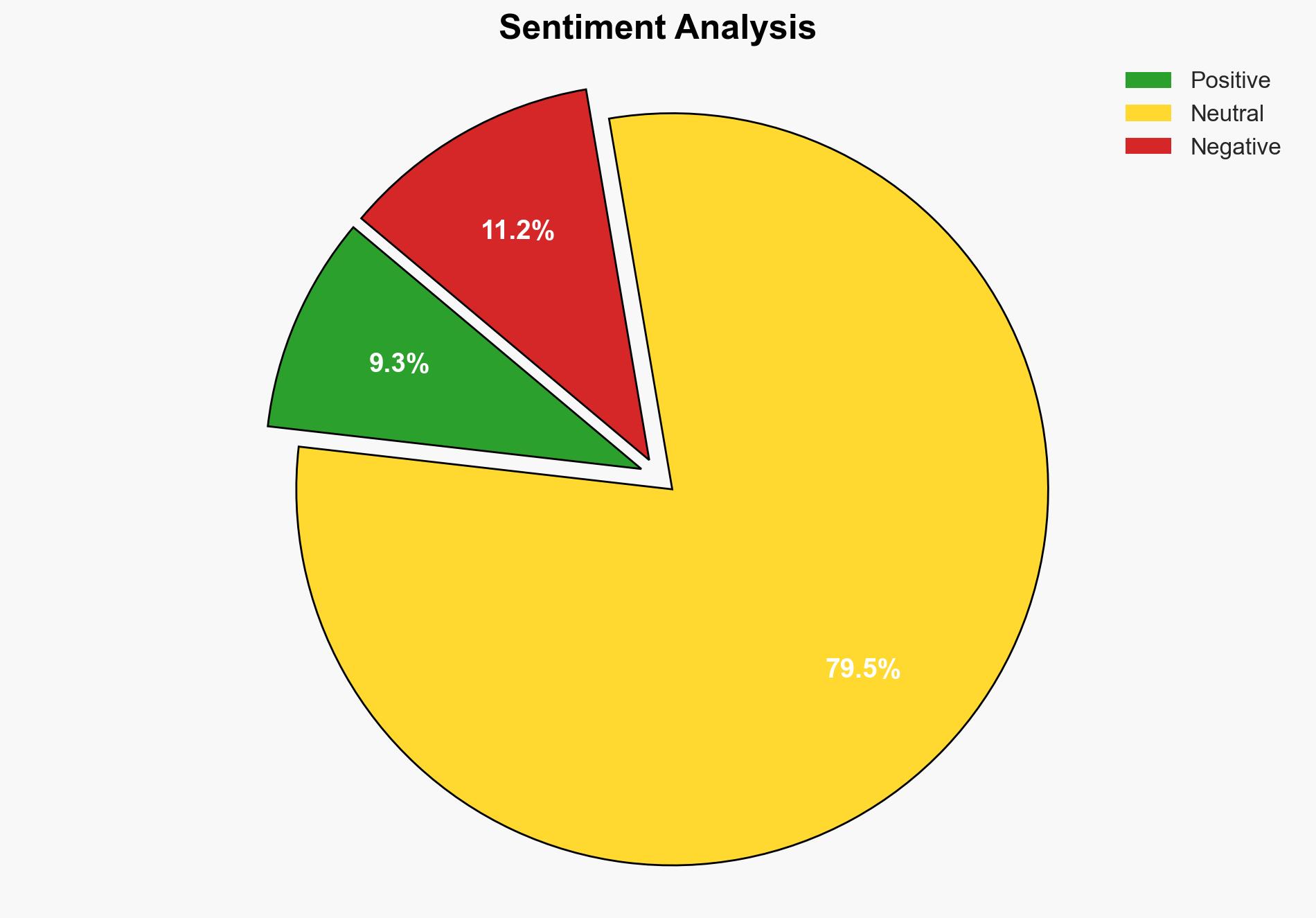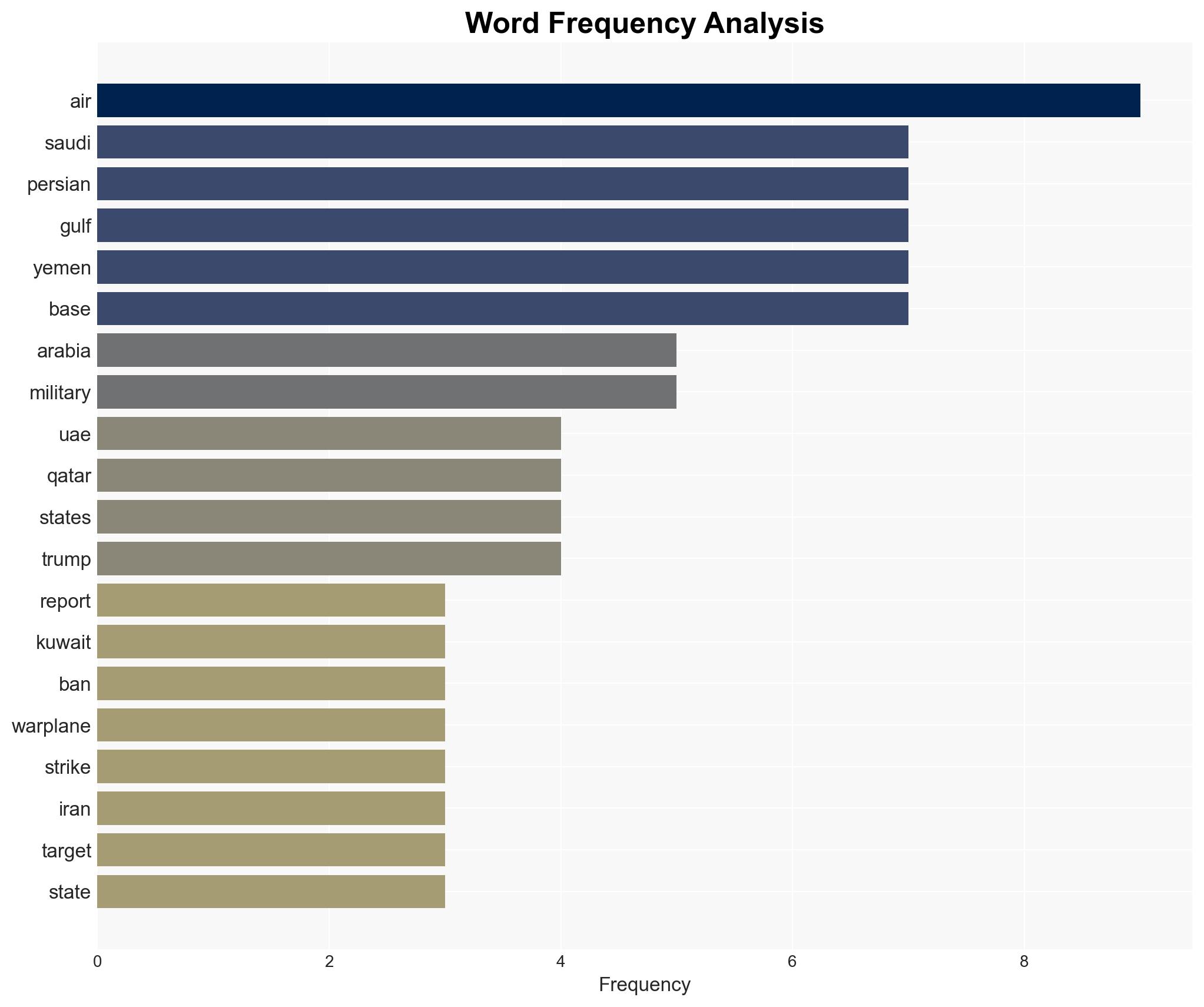Report Saudi UAE Qatar Kuwait ban US warplanes for strikes – Globalsecurity.org
Published on: 2025-04-03
Intelligence Report: Report Saudi UAE Qatar Kuwait ban US warplanes for strikes – Globalsecurity.org
1. BLUF (Bottom Line Up Front)
Saudi Arabia, UAE, Qatar, and Kuwait have imposed a ban on US warplanes using their airfields for strikes, particularly targeting Yemen. This decision is a response to heightened tensions and military activities in the region, including recent bombings in Yemen. The move is seen as a reaction to the US’s aggressive stance towards Iran and its military operations in the Persian Gulf. The ban could significantly impact US military logistics and operations in the Middle East.
2. Detailed Analysis
The following structured analytic techniques have been applied for this analysis:
General Analysis
The ban by Saudi Arabia, UAE, Qatar, and Kuwait on US warplanes is primarily driven by regional security concerns and the desire to distance themselves from escalating US-Iran tensions. The increase in military cargo flights and the movement of warplanes to Jordan indicate a strategic repositioning of military assets. The recent approval of arms sales to Qatar and Saudi Arabia suggests a complex interplay of military and diplomatic strategies aimed at maintaining regional influence while managing internal and external pressures.
3. Implications and Strategic Risks
The ban poses significant risks to US military operations, potentially disrupting strategic air and naval bases in the Persian Gulf. It may lead to increased operational costs and logistical challenges. The regional stability is at risk, with potential escalation of conflicts involving Iran, Yemen, and other regional actors. Economic interests, particularly in the oil-rich Persian Gulf, could be adversely affected, impacting global energy markets.
4. Recommendations and Outlook
Recommendations:
- Engage in diplomatic dialogues with Saudi Arabia, UAE, Qatar, and Kuwait to address their security concerns and negotiate terms for continued military cooperation.
- Explore alternative logistical routes and bases to mitigate the impact of the ban on military operations.
- Enhance intelligence-sharing mechanisms to better anticipate regional threats and align strategic objectives.
Outlook:
Best-case scenario: Diplomatic efforts lead to a resolution, and the ban is lifted, allowing for resumed military operations with minimal disruption.
Worst-case scenario: The ban persists, leading to a realignment of US military presence in the region and increased tensions with Iran.
Most likely outcome: Partial lifting of the ban with conditions, requiring strategic adjustments and continued diplomatic engagement.
5. Key Individuals and Entities
The report mentions significant individuals such as Donald Trump and entities including Ansarullah movement and Hamas. These actors play crucial roles in shaping the geopolitical landscape and influencing regional dynamics.





